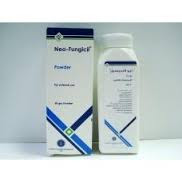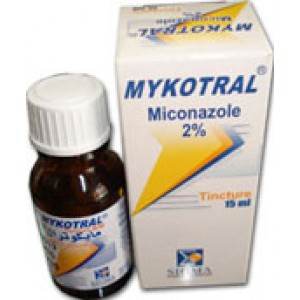- Alcometasone Dipropionate
- 0.05% cream
- Topical corticosteroids
Brand of alclometasone dipropionate
FOR DERMATOLOGIC USE ONLY
DESCRIPTION
Each gram of PERDERM Cream 0.05% contains
0.5mg alclometasone dipropionate in a hydrophilic
emollient cream vehicle containing propylene glycol,
chlorocresol, sodium phospate (monobasic, monohydrate),
phosphoric acid, polyoxyethylene (20) cetyl
ether, glyceryl stearate PEG 100 stearate, white petrolatum,
cetostearyl alcohol and purified water
Each gram of PERDERM Ointment 0.05% contains
0.5mg alclometasone dipropionate in an ointment
vehicle containing hexylene glycol, propylene glycol
monostearate, white wax and white petrolatum.
ACTIONS
Alclometasone dipropionate is a nonfluorinated, synthetic
corticosteroid with anti-inflammatory, antipruritic
and vasoconstrictive properties.
INDICATIONS AND USAGE
PERDERM Products are indicated for the relief of
the inflammatory and pruritic manifestations of corticosteroid-responsive
dermatoses.
DOSAGE AND ADMINISTRATION
A thin film of PERDERM Cream or Ointment should
be applied to affected skin areas two or three times
daily; massage gently until the medication disappears.
ADVERSE REACTIONS
Reported rarely with alclometasone are itching,
burning, erythema, dryness, irritation and papular
rashes. Other local adverse reactions associated
with topical corticosteroids, especially under occlusive
dressings, include folliculitis, hypertrichosis,
acneiform eruptions, hypopigmentation, perioral dermatitis,
allergic contact dermatitis, skin maceration,
secondary infection, skin atrophy, striae and miliaria
CONTRAINDICATIONS
PERDERM Products are contraindicated in those
patients with a history of sensitivity reactions to any
of their components or to other corticosteroids.
PRECAUTIONS
If irritation or sensitization develops with the use of
PERDERM Products, treatment should be discontinued
and appropriate therapy instituted.
In the presence of infection, an appropriate antifungal
or antibacterial agent should be administered. If
a favorable response does not occur promptly, the
corticosteroid should be discontinued until the infection
has been controlled adequately.
Systemic absorption of topical corticosteroids may be
increased if extensive body surface areas are treated
or if the occlusive technique is used. Suitable precautions
should be taken under these conditions or when
long-term use is anticipated, particularly in infants and
children.
Any of the side effects that are reported following
systemic use of corticosteroids, including adrenal
suppression, may also occur with topical corticosteroids,
especially in infants and children.
PERDERM Products are not for ophthalmic use.
Pediatric Use
Pediatric patients may demonstrate greater susceptibility
to topical corticosteroid-induced hypothalamicpituitary-adrenal
(HPA) axis suppression and to exogenous
corticosteroid effects than mature patients
because of greater absorption due to a large skin
surface area to body weight ratio, HPA axis suppression,
Cushing’s syndrome, linear growth retardation,
delayed weight gain, and intracranial hypertension have
been reported in children receiving topical corticosteroids.
Manifestations of adrenal suppression in children
include low plasma cortisol levels and absence of
response to ACTH stimulation. Manifestations of intracranial
hypertension include a bulging fontanelle, headaches
and bilateral papilledema.
USE DURING PREGNANCY AND IN NURSING
WOMEN
Since safety of topical corticosteroid use in pregnant
women has not been established, drugs of this class
should be used during pregnancy only if the potential
benefit justifies the potential risk to the fetus.
Drugs of this class should not be used extensively
in large amounts or for prolonged periods of time in
pregnant patients.
Since it is not known whether topical administration
of corticosteroids can result in sufficient systemic
absorption to produce detectable quantities in breast
milk, a decision should be made to discontinue nursing
or to discontinue the drug, taking into account
the importance of the drug to the mother.
OVERDOSAGE
Acute overdosage with dermatologic application of
corticosteroids is unlikely and would not be expected
to lead to a life-threatening situation.
Symptoms
Excessive or prolonged use of topical corticosteroids
can suppress pituitary-adrenal function, resulting
in secondary adrenal insufficiency, and produce
manifestations of hypercorticism, including
Cushing’s disease.
Treatment
Appropriate symptomatic treatment is indicated.
Acute hypercorticoid symptoms are usually reversible.
Treat electrolyte imbalance, if necessary. In
case of chronic toxicity, slow withdrawal of corticosteroids
is advised.



